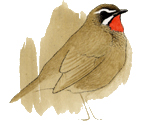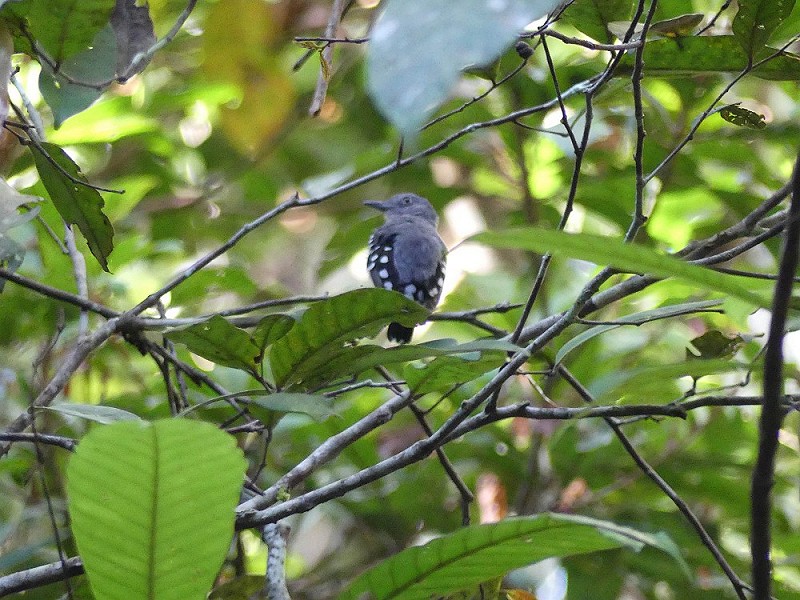http://www.arjandwarshuis.com/#biggestyear
http://world.observation.org/arjan.php
PLEASE MAKE A DONATION NOW!
August 26th ACROSS THE MIGHTY AMAZON
Last evening I had arrived at Lima airport where I met my girlfriend Camilla. Together we will travel for 28 days through every corner of Peru and Southern Ecuador. This mammoth birding trip covering every biome of the birdiest part of the world is made possible by Tanager Tours. Behind the scene former owner Wim ten Have has constructed the best possible itinerary and prepared all the logistics to the smallest detail. For the majority of the trip we will be guided by Miguel Lezama, a top birder and the new owner of Tanager Tours.
From Lima we flew straight to Iquitos where we would start this mega tour with a bang; three days of birding the varzea forest and river islands around the famous Muyuna Lodge and one day exploring the white sand forest of Allpahuayo Mishana Reserve.
After just a couple of hours of sleep – we’d arrived at our Iquitos hotel after midnight – we decided that it was time to do some birding before we would depart by boat to the Muyuna Lodge. For Camilla birding the Iquitos Boulevard was a great introduction to the birding extravaganza the Amazon is. In barely an hour we saw over 50 species, all of them of course lifers for her.
Around 10 AM we boarded our transfer to Muyana Lodge, more than 140 kilometres by boat across the mighty Amazon, quite an experience! During the last quieter stretch across a small tributary we saw both Scarlet-crowned Barbet and White-eared Jacamar. Around 1:30 PM we arrived at the lodge where we were greeted by Moises, the best local guide the lodge has to offer and half an hour later he took us on a boat upriver to look for the near endemic Black-tailed Antbird.
The shores of the river were very birdy and highlights includes a bright male Plum-throated Cotinga, Orange-fronted Plushcrown, Slate-coloured Hawk, Horned Screamer and a family group of the scarce Velvet-fronted Crackle. Best however was a very obligating pair of Black-tailed Antbird meaning that Camilla’s first ever Antbird was immediately a rare Peruvian specialty!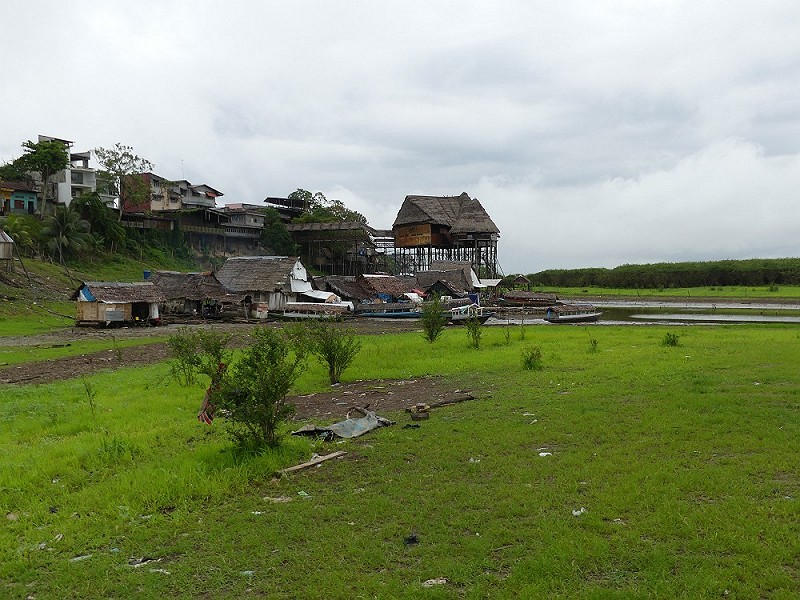 Amazonian village (Camilla Dreef)
Amazonian village (Camilla Dreef)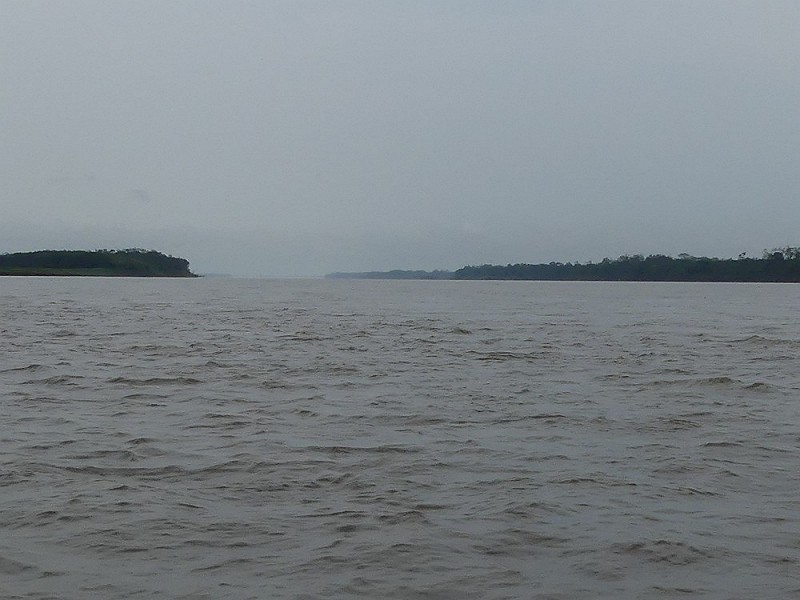 The Amazon (Arjan Dwarshuis)
The Amazon (Arjan Dwarshuis)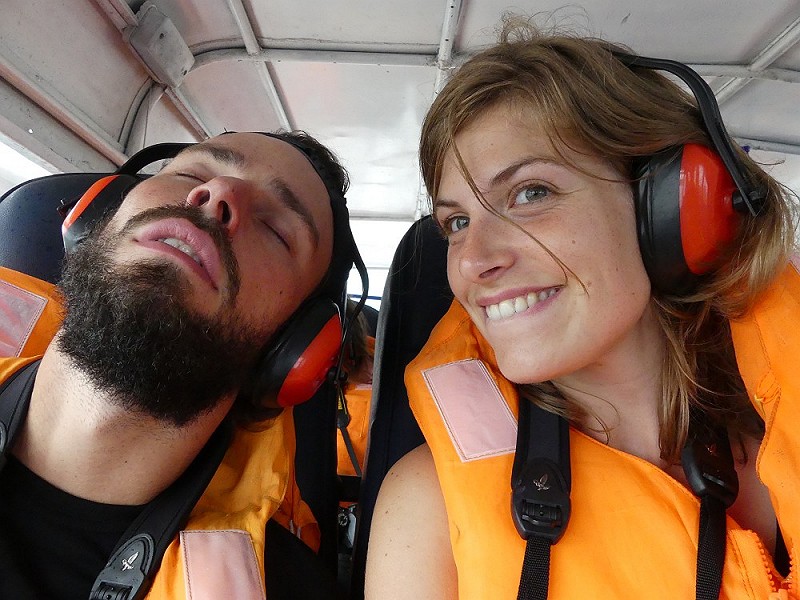 Powernap :) (Camilla Dreef)
Powernap :) (Camilla Dreef)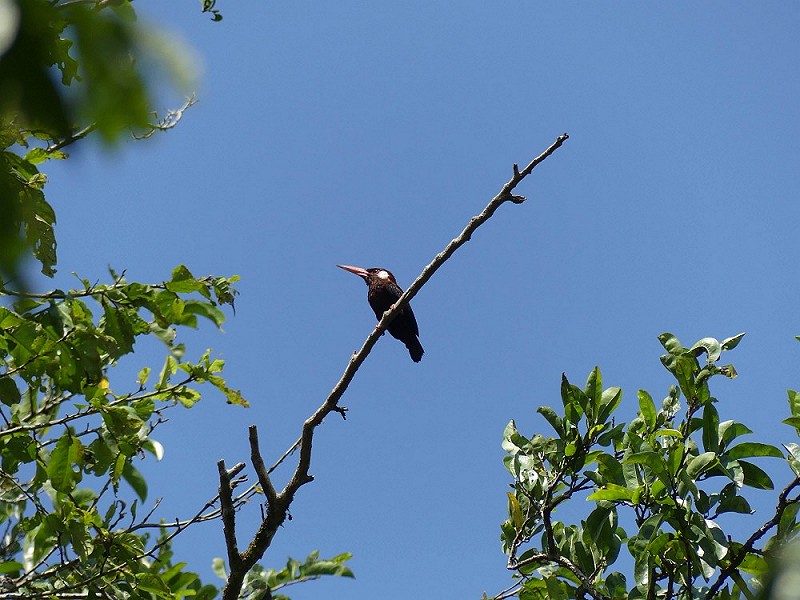 White-eared Jacamar Galbalcyrhynchus leucotis (Camilla Dreef)
White-eared Jacamar Galbalcyrhynchus leucotis (Camilla Dreef)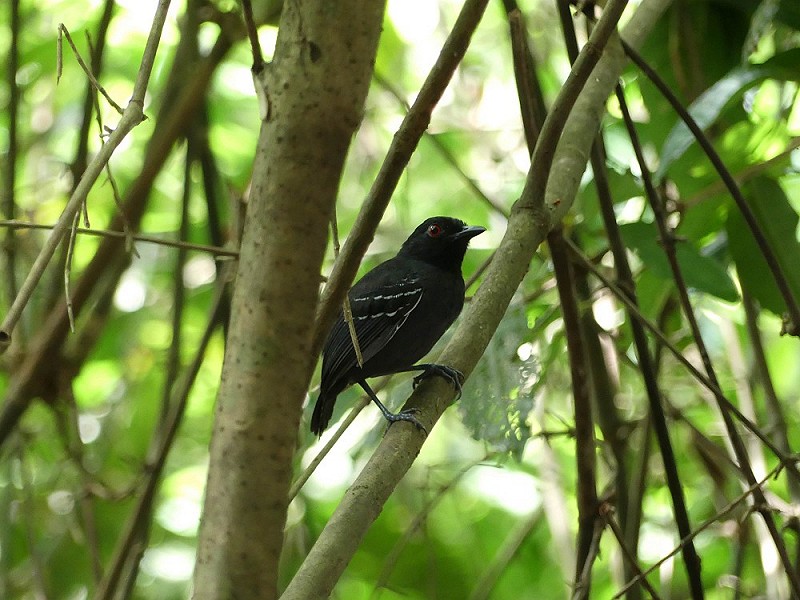 Black-tailed Antbird Myrmoborus melanurus (Arjan Dwarshuis)
Black-tailed Antbird Myrmoborus melanurus (Arjan Dwarshuis)
August 27th RIVER ISLAND SPECIALTIES
The main reason to visit the Muyuna Lodge from a Big Year perspective are the river island specialties, comprising about 20 fascinating species, which utilize the different niches – created by suggestion – found on these islands. To me the fact that there are 20 unique species only found on islands in the river embodies the glorious biodiversity of the Amazon.
As early as 4:30 AM Moises took us downriver on a small boat, en route we saw a huge Great Pootoo in the flashlight! At the crack of dawn we landed on a huge sandbank and from here we started walking. On the sandbank we found a nice selection of boreal waders on their way to their wintering grounds, most unexpected was a Buff-breasted Sandpiper.
As soon as we entered the grass and young secropia forest we started seeing river island specialties, four different spinetails, handsome Castelnau’s Antshrikes and Black-and-white Antbirds, the drab Olive-spotted Hummingbird and Lesser Hornero. The further we entered the tall older secropia forest we started seeing different birds namely Plain-breasted Piculet, Leaden Antwren and Ash-breasted Antbird, but the best find was a pair of the poorly known Zimmer’s Woodcreeper, for me that is, Camilla was more occupied with a stunning Great Pootoo roosting in a tree on the other side of the trail.
We found two beautiful Parrot species, the Short-tailed- and the gaudy Festive Parrot and after tracking down Pale-billed Hornero and Pearly-breasted Conebill we had completed our quest!
Back on the boat we had a late brunch that was put on a hold when a pod of Pink River Dolphins popped up right next to the boat, an amazing sighting! We even saw several of them breaching!
After lunch and a well-deserved cold shower and powernap – it gets very hot on a river island – we did a loop on the trail system behind the lodge to look for a true Muyuna specialty, the Rufous-necked Puffbird. We walked silently for hours following Moises through a mosquito infested varzea forest, but there was no sign of the puffbird. We did see several tiny Pygmy Marmosets and a fantastic Wire-tailed Manakin. We were already heading back to the lodge when the sun had nearly set when Moises suddenly froze and pointed to a plump shape sitting on a low branch, the Puffbird, a fantastic pair to be precise! What a great day!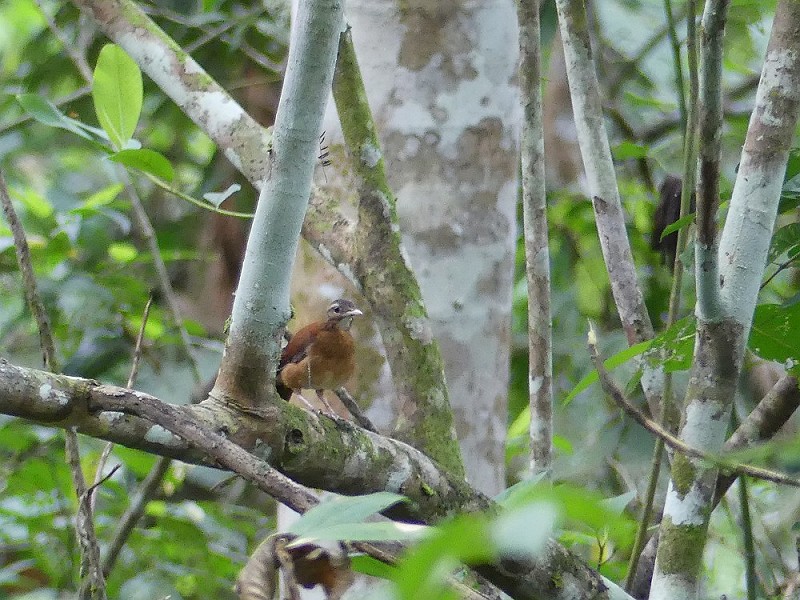 Pale-billed Hornero Furnarius torridus (Camilla Dreef)
Pale-billed Hornero Furnarius torridus (Camilla Dreef)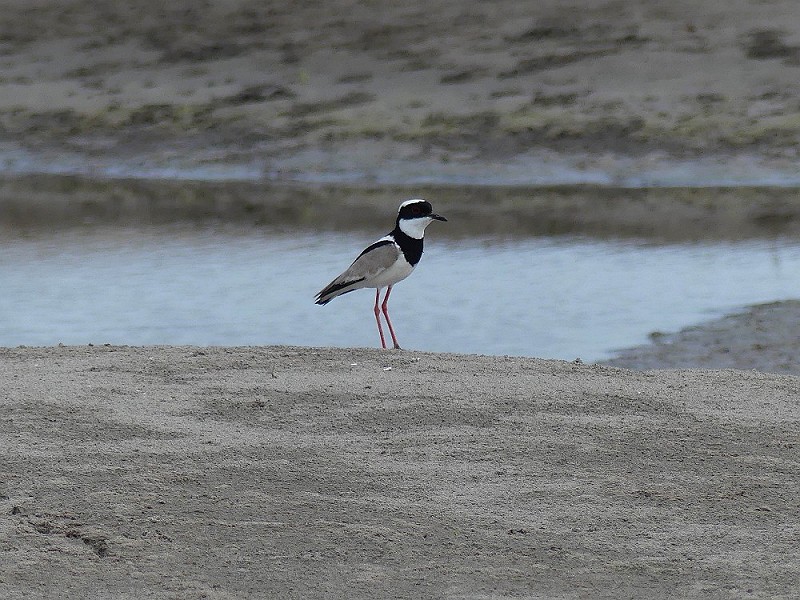 Pied Lapwing Vanellus cayanus (Arjan Dwarshuis)
Pied Lapwing Vanellus cayanus (Arjan Dwarshuis)
August 28th TRACKING THE WATTLED CURASSOW
There is one Holy Grail for every serious birdwatcher visiting the Muyuna Lodge, the incredibly rare and endangered Wattled Curassow. This amazing game bird has been driven to the brink of extinction by habitat destruction, but mainly through hunting and capture for the pet trade. The largest known population is found in remote varzea forest in a protected area near the Muyuna Lodge – Muyuna actually means Curassow! Finding this mythical bird is extremely difficult, you have to be in the forest before sunrise, the birds are terribly shy and of course they are far from common.
When it was still dark we left Muyuna lodge by boat and half an hour later we started walking along the edge of a small vegetated oxbow lake. We followed Moises in complete silence while he skilfully made his way through the forest undergrowth with a machete. After two hours we still hadn’t seen let alone heard a Curassow, but luckily there were several noisy Horned Screamers to keep us busy. Suddenly a big bird flew up from the forest floor and Moises whispered ‘curassow’! Had we blown our only chance at the beast? But there flew two more birds away from and by some miracle I saw one landing 200 meters away through a key-hole in the forest canopy. I aimed the scope and for 1 magical minute we had fantastic views of a Wattled Curassow! A moment we shall not soon forget.
After this thrilling morning we took a leisurely walk to a family of prehistoric looking Hoatzins, fantastic birds placed in their own monotypic family. Another good find was a noisy and showy Varzea Schiffornis.
We had already our last lunch at the fantastic Muyuna Lodge and boarded our fast boat 140 kilometers across the Amazon back to Iquitos, but not before we saw – the same? – pod of Pink River Dolphins one more time :).
August 29th THE WHITE SAND FOREST OF ALLPAHUAYO MISHANA
Early morning Camilla and I took a collectivo to km 25 along the road from Iquitos to Nauta, from here one can access the Allpahuayo Mishana Reserve. This protected area harbours a nice track of white sand forest – a peculiar type of stunted forest that grows on poorly drained sandy soils - from where almost two decades ago no less than five new species for science where described, the Allpahuayo Antbird, Zimmer’s Antbird, Ancient Antwren, Mishana Tyrannulet and Iquitos Gnatcatcher. Ten years ago I spent 12 days in Iquitos and visited this reserve more than eight times before I’d finally seen all these specialties. Especially the critically endangered Iquitos Gnatcatcher is incredibly difficult. Allpahuya Mishana is well known as being one of the quietest places in the Amazon and despite the amazing bird list you are bound to find only a tiny percentage.
Just after we entered the white sand forest there was some activity which resulted in great sightings of Ancient Antwren, Pearly Antshrike and Citron-bellied Atilla, but quickly as it started bird activity dropped to almost zero before 8 AM. This resulted in me getting very frustrated by 10 AM. Still none of the antbirds and a lot of other specialties were missing.
We redeemed ourselves in the late morning with two sightings of the uncommon Many-banded Aracari, a Yellow-billed Nunbird and a Mishana Tyrannulet, but no Gnatcatcher or Antbirds were found.
We took a collective back to Iquitos, had lunch and went to the airport for our flight to Lima. Iquitos was great despite a rather disappointing Allpahuayo, but that’s just how this place works :)
Arjan Dwarshuis
http://www.arjandwarshuis.com/#biggestyear
http://world.observation.org/arjan.php
PLEASE MAKE A DONATION NOW!
